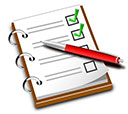Orthodoxy in Central Asia. The Sources and the Modern Time
Malinovskaya Ye.A. Orthodoxy in Central Asia. The Sources and the Modern Time . – Polis. Political Studies. 2008. No. 2
Orthodoxy, like any confession that has more or less gained foothold among this or that ethnos, is beginning to gradually adapt itself to national features of the peoples of Central Asia. Besides, Orthodoxy is the most non-missionary, non-proselyte branch in Christianity. Given the decrease of the ethnic basis of Orthodoxy as a result of active migration, it is perceived by local authorities as a kind of a relic, support of which promises the states of the region, without any noticeable expenditures, great propagandist effect.
See also:
Zeletdinova E.A., Lagutkin O.Yu.,
Dominants of Social Conscious-ness in the Confessional Sphere in the Astrakhan Region. – Polis. Political Studies. 2008. No2
Metropolitan Kirill,
Orthodoxy and Education. – Polis. Political Studies. 2008. No2
Zubov A.B.,
Christians and Politics: Persecuting Church and Persecuted Church. Why Will All Who Seek Living in Christ, Will Be Persecuted?. – Polis. Political Studies. 2008. No2
Ryabykh Georgy Rd.,
Russian Orthodox Church in the System of Modern International Relations. – Polis. Political Studies. 2008. No2
Schmidt W.V.,
Interpretation of the Personality of Patriarch Nikon in Russia and Abroad (J. Billington’s Research “The Icon and the Axe” as Example). – Polis. Political Studies. 2008. No2





.jpg)






 print
print
.jpg)
.jpg)